Table of contents
Know more about Goddess Freya!
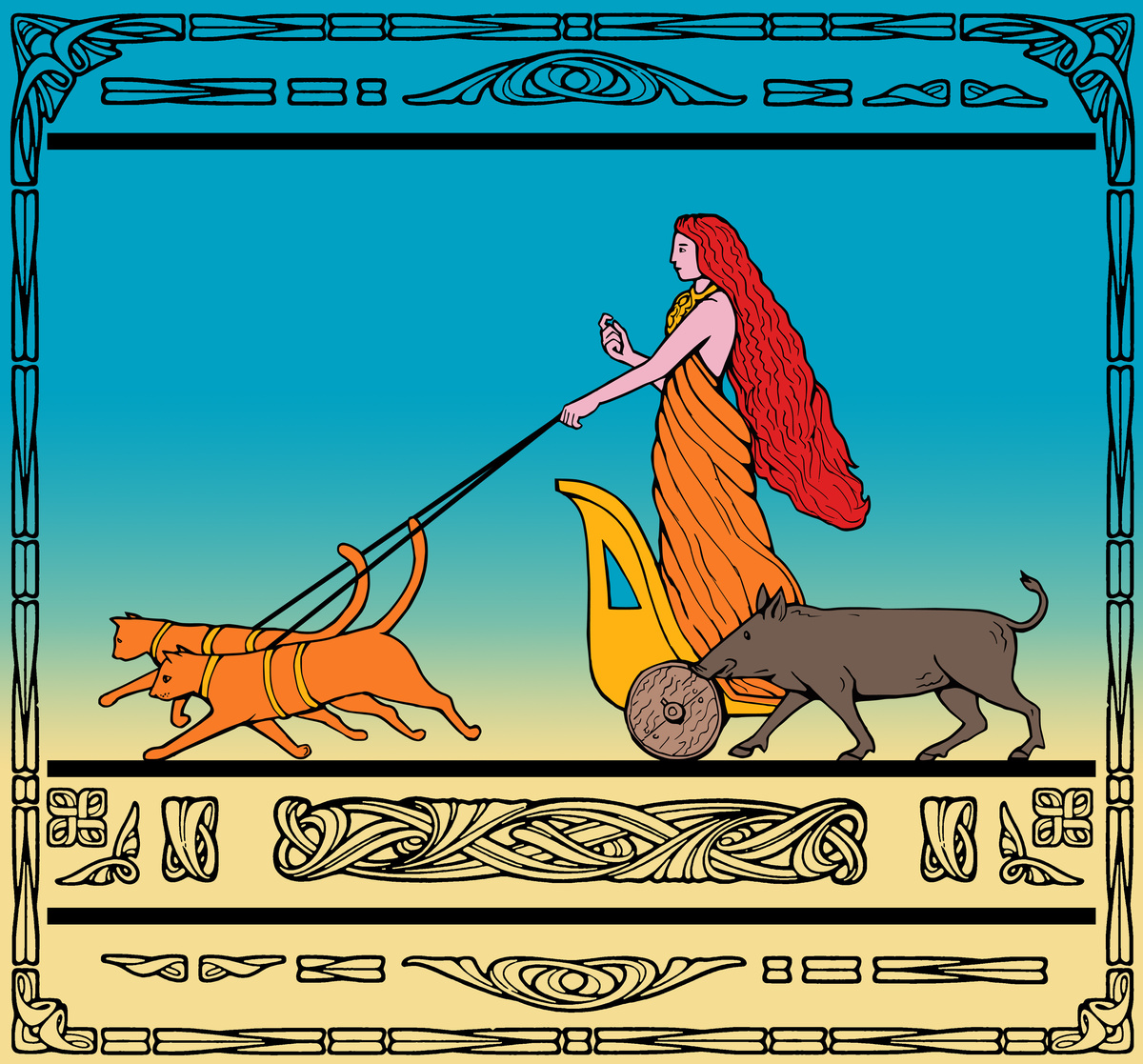
Some Gods and Goddesses are well known to the public, among them the Norse, such as Odin, Thor, or even Freya - Warrior Goddess, she is associated with wisdom and femininity. Leader of the Valkyries, she is responsible for sending half of the warriors killed in battle to Sessrumnir, a hall created by Odin especially for them, while the other half went to Valhala.
Despite her striking characteristics of strength and independence, Freya is shrouded in a deep aura of mystery and lightness. Understand better this Norse Goddess, her importance, her symbols and much more.
Getting to know the Goddess Freya
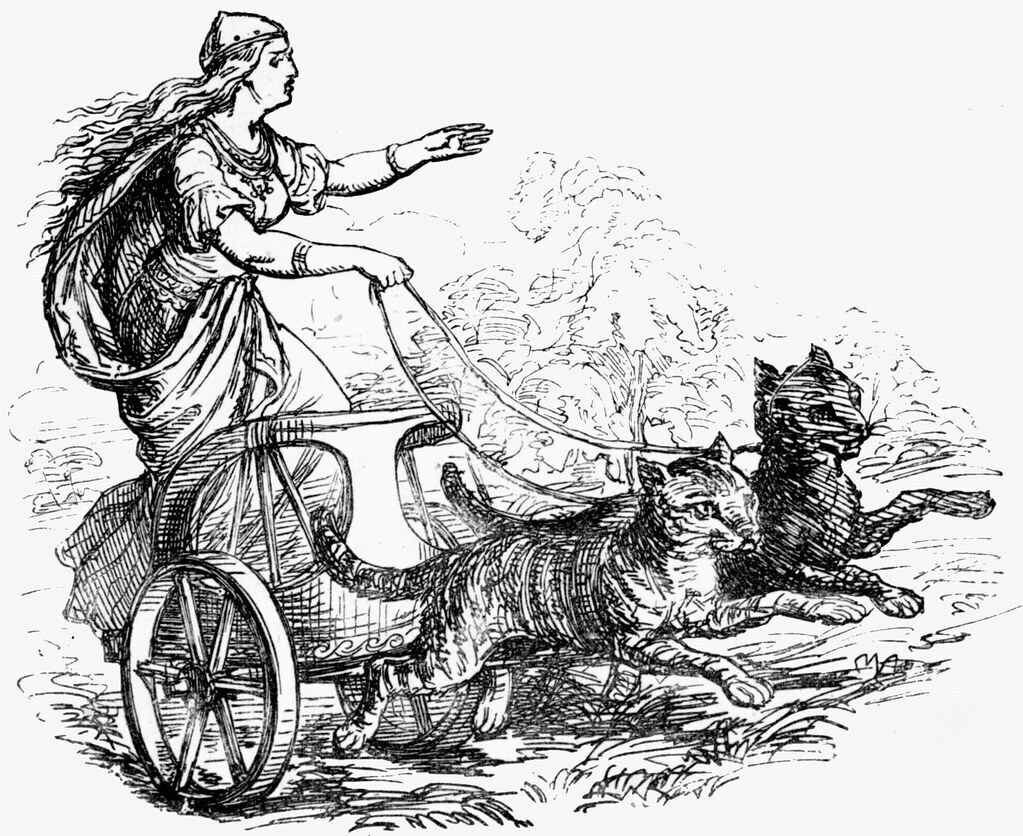
Belonging to the realm of Asgard, the Goddess Freya belongs to the clan of the Vanir, those who deal with fertility, prosperity, the arts, and war. Deeply in love with her partner Odur - who carries the chariot of the day across the sky, she is extremely lonely.
Legend has it that Freya weeps tears of amber and gold because she can never meet Odur, thus bringing prosperity to all on Earth. Likewise, she is a ruthless warrior, unpitying her opponent. Learn more about this complex and intense Goddess.
Source
The Goddess Freya is the daughter of Njord, the God of the sea and Skadi, the giant Goddess of the mountains and ice. Her brother, Frey, complements her and she is known as the Goddess of love, sexuality, fertility and lust, as much as she is the Goddess of war and death.
Originally, she did not dwell in Asgard, but came to have that right after a battle, bonding deeply with the Gods of war. She is also considered the Goddess of magic, divinatory arts, and wisdom.
Visual characteristics
Beautiful and intense, the Goddess Freya has a body full of curves, highlighting her sensuality; she is not very tall - but still extremely strong and determined. With light hair and eyes, her face is full of freckles and from her eyes, tears turn to gold and amber.
Full of admirers, she is always adorned with lots of jewelry and fine fabrics, using her beauty and strength to get what she wants. Poems and music are her distractions, and she can spend hours on end lost among her favorite tunes.
History
Njord and Skadi, father and mother of the Goddess Freya, were not together for long, for he could not live in the mountains and she could not live in the sea. Thus, Freya grew up under the guidance of her mother, becoming a great warrior.
On the other hand, in her essence, she carried the prosperity and fertility inherited from Njord, thus becoming the Goddess of sensual love, in the sense of passion and reproduction. Married to Odur, she had two sons: Hnoss and Gersimi, and spent much of her time in travels crossing the skies in her chariot searching for her beloved who had disappeared.
What does the Goddess Freya represent?
Archetypically, the Goddess Freya represents the free, natural feminine, who is prosperous and sensual. She is also the sorceress, the oracle, connected to the divinatory arts and therefore to intuition. On the other hand, she is pure strength, warrior and knows how to choose the best to be by her side.
Leader and fearless, she is pure love, being represented by a triple goddess - the virgin, the mother and the old woman. These are the three faces of the feminine: the innocent and full of hope young girl, the prosperous mother and the wise woman, who helps guide her own through life's paths.
Importance of Goddess Freya
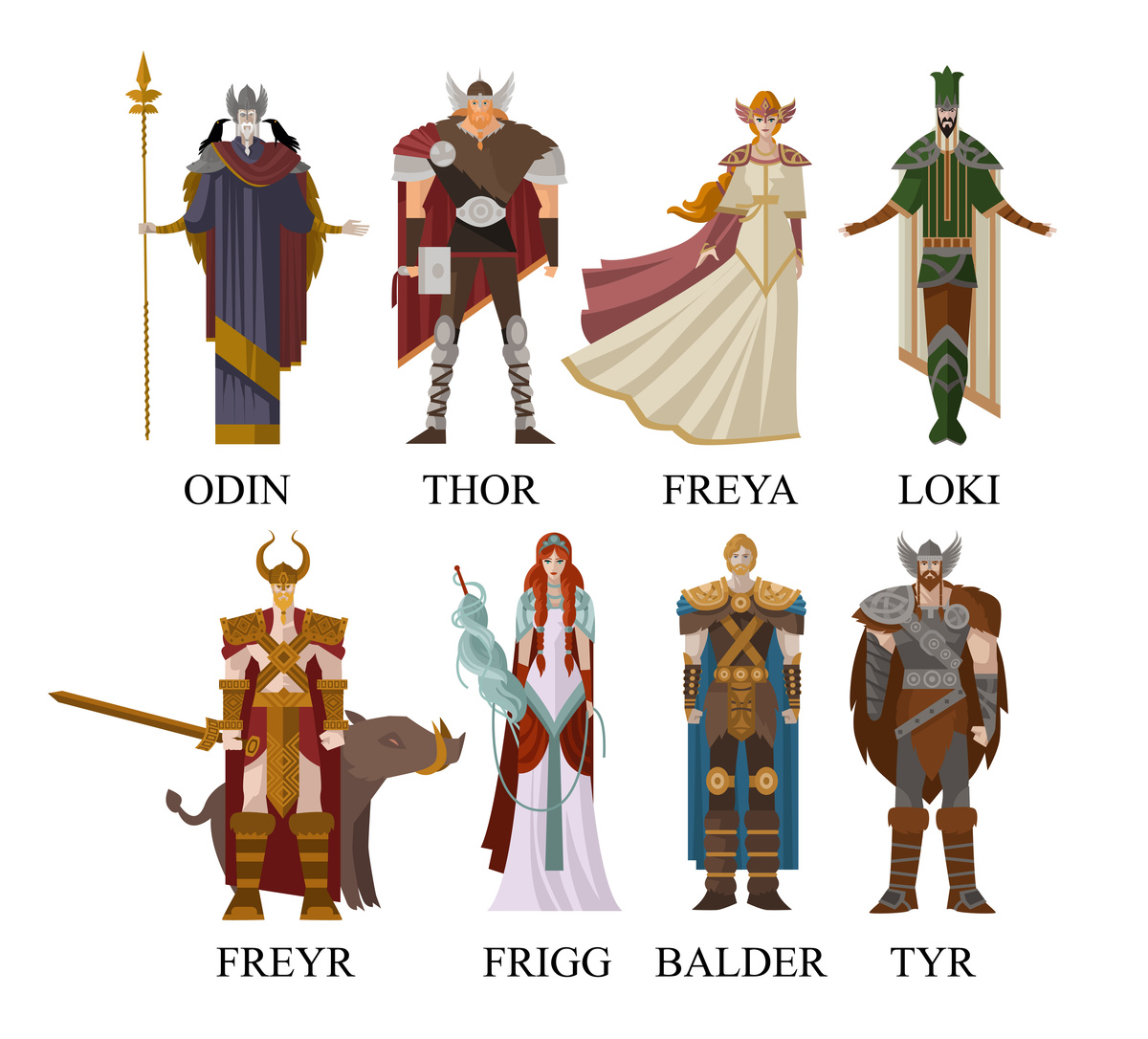
For the Norse, Freya is one of the main Goddesses, and honors are given to her in the passages between life and death. It is also to the Goddess Freya that fertility and abundance are asked. However, she goes much further, being the Goddess of divinatory arts, often confused with Odin's wife. Understand better.
Goddess Freya and the Runes
The Nordic runes are related to the Goddess Freya, who discovered and guided Odin on how to make them. This oracle is still widely used nowadays to help in the conquest of self-knowledge and in the search for answers for the now and for the future.
According to the legend, they were created by Odin when he pulled the tree of life from the ground and cut its skin, where each drop of blood that dripped on the ground became a rune. It was then that he gave one of his eyes in exchange for a drop of the fountain of wisdom, thus sharing control of the runes with Freya and her priestesses.
Goddess Freya in Norse Mythology
The Goddess Freya is one of the most important in Norse Mythology, having several mentions and tributes. This is because there are no holy books or dogmas in this faith, even less preachers or churches. This does not mean that, even if in a spoken form, from generation to generation, the Gods do not receive due recognition.
In fact, in the early days of this faith, sacrifices were absolutely normal in order to please the Gods. Fond of jewels, flowers and poems, the Norse Goddess of love and war prefers more subtle offerings, according to Norse beliefs. She helps everyone, without distinction, as long as it goes according to what she believes in.
Freya and Frigg
Often the Goddess Freya, leader of the Valkyries, is confused with Frigg, wife of Odin. This is because both are Goddesses of love, but in different attunements. Freya is focused on a more sensual love, passion, magic and fertility, while Frigg is the love of the family, caring for marriage and offspring.
Frigg is obviously always by Odin's side, but Freya also occupies a prominent place with the God, as she helps guide the souls of warriors closer to Odin, choosing the best ones for herself. In addition, they share the secrets of the runes and maintain good relations.
Goddess Freya in other religions
As it happens in other religions, there is a strong syncretism of the Goddess Freya with other deities, from other pantheons. The most common is her relationship with the Greek Goddess Aphrodite, who is also a beautiful woman, Goddess of love and fertility.
In the Egyptian pantheon, she can be syncretized with the Goddess Qetesh, formed by the triad of Goddesses Qudshu-Astarte-Anat. Of Semitic origin, she is the Goddess of fertility and pleasure, being the only one to be portrayed from the front in her paintings, contrary to the Egyptian norm.
Symbols of the Goddess Freya
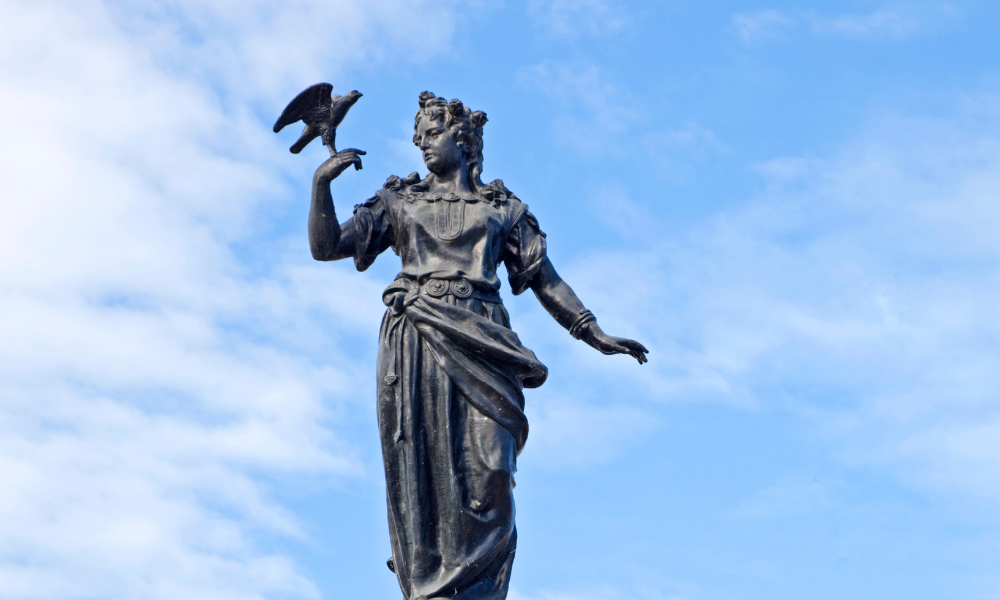
Like every deity of any pantheon, the Goddess Freya has her icons, which are related to her archetype. Among them are: the Brisingamen necklace, her war chariot, cats and lynxes, the boar Hildisvín and the feathered robe. Learn about each of these symbols of Freya.
Brisingamen Necklace
The Brisingamen necklace is one of Freya's symbols and has the power to end painful feelings and memories. Besides relieving pain, it can also control day and night, containing a glow similar to that of the sun, which also reminds of Freya's missing husband.
It is made of gold and was produced by four dwarven blacksmiths with the power of magic and metal manipulation. To obtain the jewel, Freya spent the night with each of the dwarves. The necklace was later stolen by Loki, then recovered by Heimdall and given to the Goddess.
War wagon and its wild cats
Queen of the Valkyries, the Goddess Freya was a warrior who loved the battlefield as much as her jewels. Fearless, she always took the lead, charging forward with the Valkyries towards the poor soldiers who would face her wrath.
To do so, she often used an extremely agile and fast war chariot, which was pulled by two lynxes (or other felines, depending on how the legend is told). For this reason, one of her best-known symbols is the cat, having deep ties with this creature laden with mysticism.
Wild boar Hildisvín
In the same way that the Goddess Freya uses her lynx-drawn war chariot to reach the battlefield first, she relies on other transportation when she is on the ground, face to face with her enemies: Freya is depicted riding a ferocious boar, which not only moves, but also attacks.
The boar is also a symbol of its brother Freyr and is linked to the feasts of the arrival of spring, representing prosperity, renewal and fertility. Therefore, it was used to sacrifice the animal at the beginning of the year and offer it to the gods, leading to the custom of eating pork at the new year's dinner.
Feather cloak
One of the best known symbols of the Goddess Freya is her cloak of falcon feathers, which gives the wearer the power to transform into that bird. Freya wears it on the battlefields, to have a broader vision of the strategy to follow.
In addition, Freya's feather cloak also has the function of making its wearer travel between the nine worlds simply and quickly. It is so effective that Thor himself once borrowed it in order to retrieve his Mjölnir which had been stolen while he was asleep.
Further information about the Goddess of Love
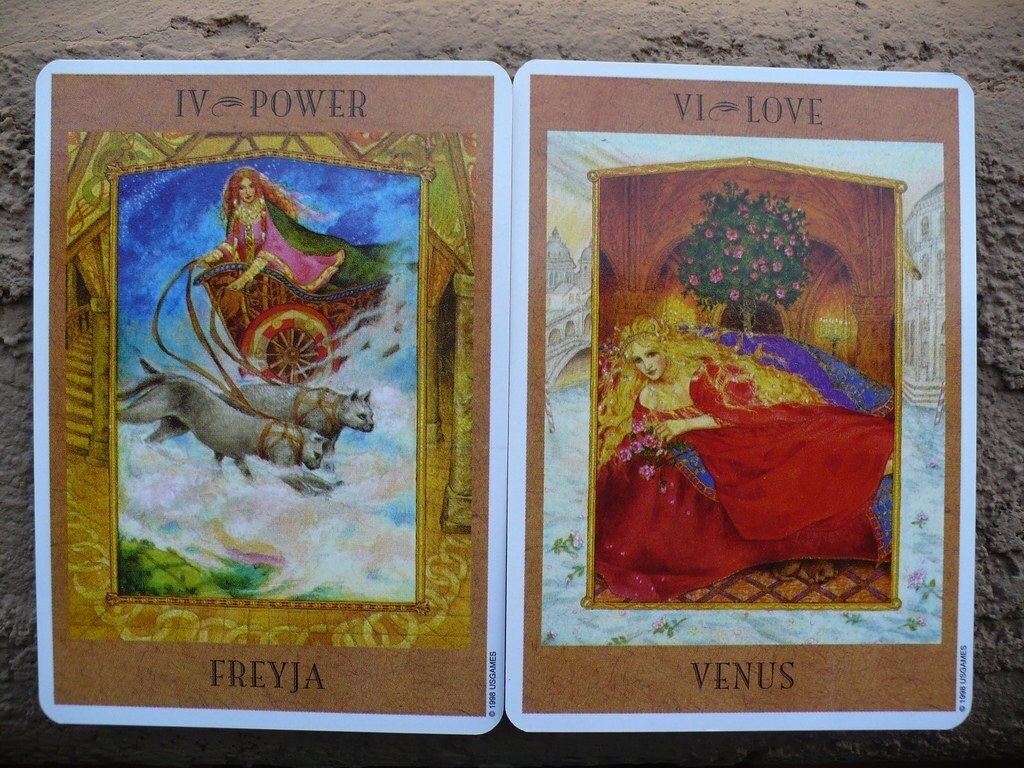
There are many legends and information about the powerful Goddess Freya, being worshiped to this day by pagan and neo-pagan religions. Understand a little deeper how was the home, family, habits and curiosities of the Goddess Freya. Also learn her prayer and how to invoke her energy for your days.
Home of the Goddess Freya
In Norse mythology, there were two main peoples: the Aesir, led by Odin, great warriors and Gods of war; and the Vanir, led by Freya's father, Njord, deep connoisseurs of magic and divinatory arts. Living near the sea and related to fishing, the Vanir had the beaches and coastal regions as their home.
After the war between the Aesir and Vanir, with losses on both sides, Odin and Njord decided to ally themselves, and as a token of friendship, Njord moved to live with the Aesir and another important Aesir family went to live with the Vanir. In this way, Asgard became home to the Goddess Freya, who still kept her hall of warriors slain in battle in her homeland.
Family of Goddess Freya
There is controversy over who Freya's mother is, whether it is the giant mountain goddess, Skadi, or whether it was Njord's sister, Nerthus. Among the Vanir, incestuous practices were considered normal, though absurd to the Aesir. Christian interpretations may have led to this association between Skadi and Njord.
Regardless of the mother figure, one thing was certain: Goddess Freya had a brother who complemented her, named Freyr. He is the God of fertility and, associated with Freya, brings prosperity and abundance to the Norse people. And unlike his sister, Freyr is not adept at war, preferring music and poems.
Habits of the Goddess of Love
The Goddess Freya is pure motion. One of her habits, when not in battle or welcoming the souls of the dead, is to travel. She often climbs into her feline-drawn chariot and visits every nook and cranny of the Earth, not only to meet, but also to try and find her love, Odur.
Curiosities about the Goddess of Love
The word Freya is the basis for the word fru, meaning lady who has dominion over her possessions - later being called just lady. Today, in Icelandic, fru means woman, with similar derivations in German. Another interesting trivia about Freya is that she is connected to the earth, while her husband is the representation of the sun. Together, they bring fertility and abundance.
Prayer to Goddess Freya
Whether you ask for more courage, self-love or even fertility and prosperity, you can make a prayer in honor of Goddess Freya. To do this, light a blue, red, white or green candle and say the following prayer:
"Hail mighty Freya, I ask for protection
Under his falcon's wings and under the war maiden's shield
Help me make peace between my enemies
And give me courage to fight again
Let me be protected too
And closed against trespassing,
Help me pay fairly
And to accept fairly what is due me.
Hail Goddess of love,
Loaded with amber, Lady of Brisingamen.
Light within me the creative spark.
Help me bring beauty
In my own actions and all that I do.
So it is."
Invocation to Goddess Freya
The invocation to the Goddess Freya is usually related to requests for self-love, romantic or sensual love, fertility and childbirth, magic, creativity and protection. The ideal is to make the invocation on a Friday (her sacred day), on the 13th day of the month, which is her lucky number or on the 19th of April.
For this, choose candles in blue, red, white or green colors, incense sticks, fresh/dried herbs or essential oils of Hyacinth, daisy, strawberry, primrose, rose and plantain, and as crystals, opt for Coral, Quartz Crystal, Granada, True Moonstone or Selenite.
Its element is earth, and you can use as symbols feathers (the ideal is falcon, but you can use any other), amber necklace, Nordic runes, spear and shield. Choose the symbol according to the intention of your invocation. Full moon nights are the most favorable for this process.
Then, just firm your intention and prepare the altar to the Goddess Freya with many flowers, especially from the field and daisies, candles, scents and jewelry. Make your personal prayer after lighting the candles and invoke the Goddess for the desired purpose.
Ideally, use your own words - a much more powerful action than reading something done by someone else. Then, throw the remains of the tribute into the sea or bury it in a pot or garden.
Goddess Freya represents love and fertility!
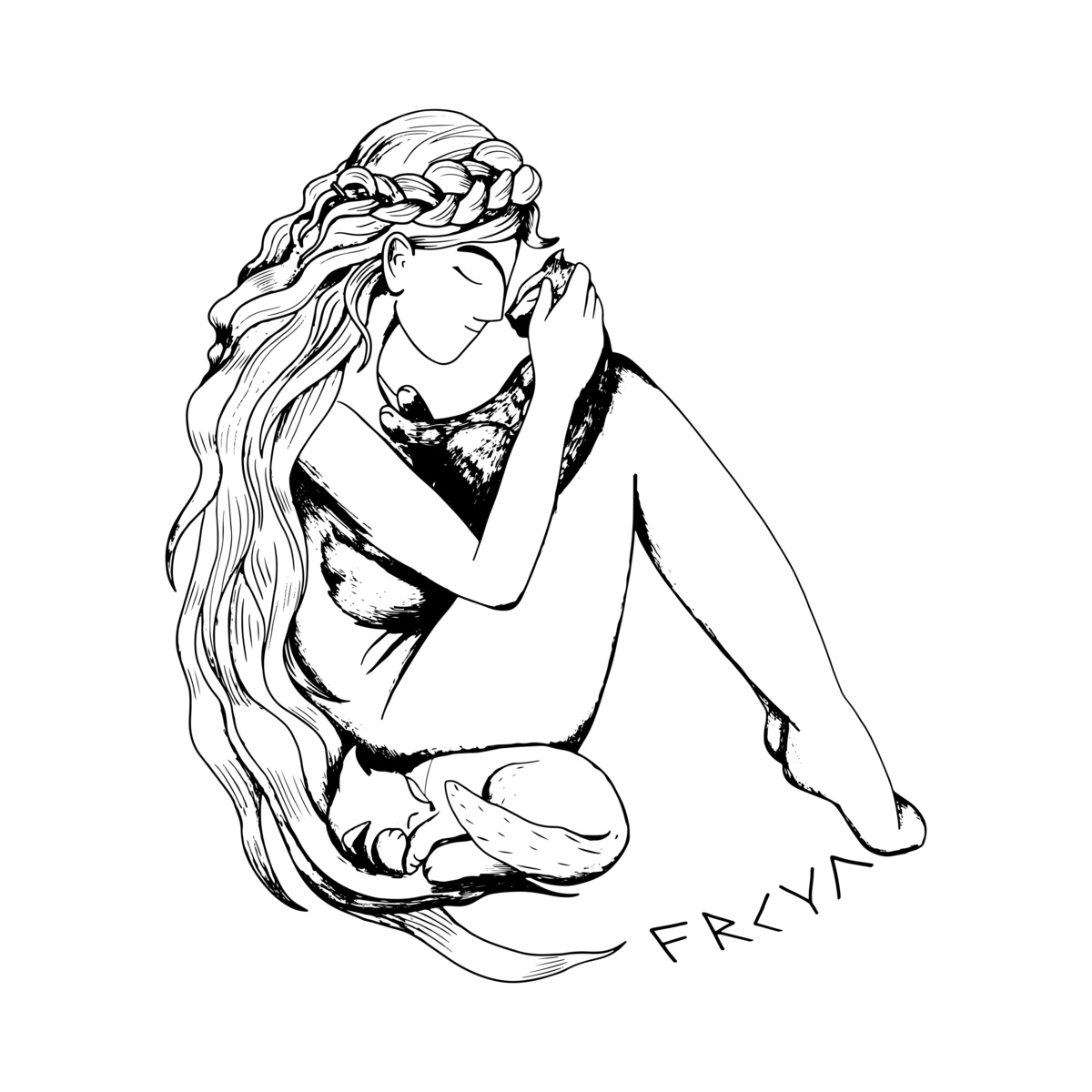
Both Goddess Freya and Goddess Frigga are related to love, however Freya deals with romantic and sensual love, while Frigga is the familiar. Linked to sexuality, beauty and pleasure, Freya is also related to prosperity and fertility and is requested for these purposes.
Thus, more than a warrior, leader of the Valkyries and owner of an unmatched power in magic, she is feminine, passionate about life and nurtured within herself an infinite love for humanity. It is no wonder that the Goddess Freya is one of the most beloved of the Norse pantheon.

